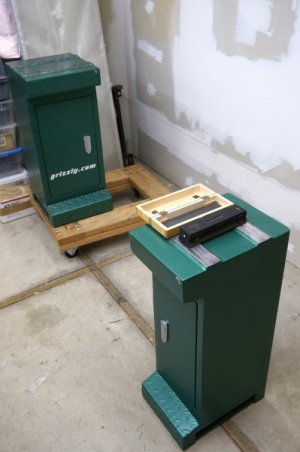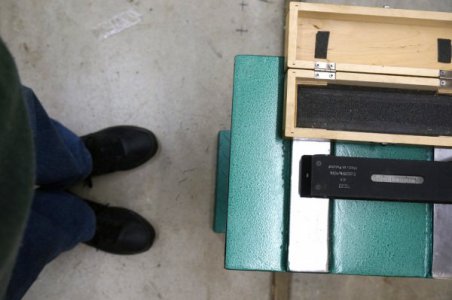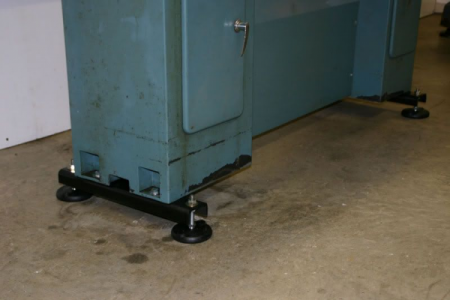I took delivery of a G4003g last week and have realized that my existing concrete floor is not stable enough at the place I want to put the lathe. It was poured about 20 years ago as a series of slabs separated by 2x4 pressure treated lumber. Also, the floor slopes about 1" in 6 ft. Unfortunately, the place I want to put the lathe is at the joint between two floor sections, and when I step on floor on either side of where the stands will go, the floor moves about .004” or so (see photos). Since this is the best place to put the lathe in a crowded home shop, the obvious solution is to cut out a section of the existing slabs and to pour a 24sq ft x 4” or 5” pad, reinforced with rebar.


My question is how large a pad will be adequate. My thought is to make the pad about 3.5 ft x 7.5 ft, or a little more than a foot larger than the footprint of the lathe in all directions. It would be nice to do the whole floor, but at this point, that isn’t practical.
The soil around here is clay, but I would not be surprised if I find the builder used sand to level this ground under the slab – I just don’t know what I’ll find. I plan to dig down a bit, add a layer of crushed rock, and tamp it down before pouring.
So, my question at this point is whether or not this slab is big enough not to move when I step on it while operating the lathe? Or should I pour a smaller pad, say 4” larger than the footprint?
Thanks in advance for all suggestions.
Douglas


My question is how large a pad will be adequate. My thought is to make the pad about 3.5 ft x 7.5 ft, or a little more than a foot larger than the footprint of the lathe in all directions. It would be nice to do the whole floor, but at this point, that isn’t practical.
The soil around here is clay, but I would not be surprised if I find the builder used sand to level this ground under the slab – I just don’t know what I’ll find. I plan to dig down a bit, add a layer of crushed rock, and tamp it down before pouring.
So, my question at this point is whether or not this slab is big enough not to move when I step on it while operating the lathe? Or should I pour a smaller pad, say 4” larger than the footprint?
Thanks in advance for all suggestions.
Douglas


